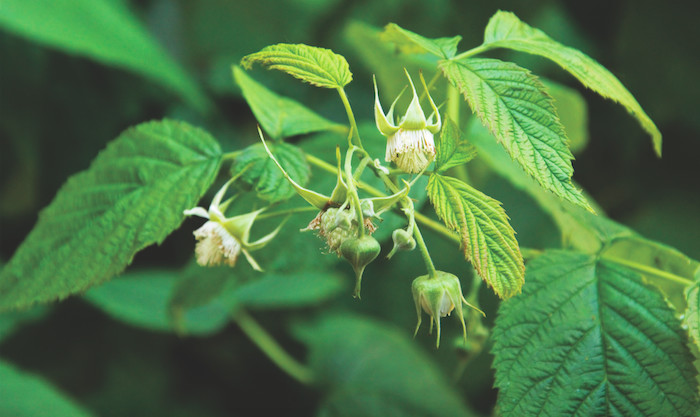
Anistasia Miller and Jared Brown find rich pickings in the foliage of many plants around this time of year.
While everyone talks about flowers in the warm months, the June dearth – a lull in blooms between spring and summer – actually spells a lean time for bees and beekeepers and foraging bartenders. While we anxiously await the first fruits of the season, much of their bright palate has been right there in front of us from the moment the plants came up in the spring – captured in the leaves. It is common knowledge among distillers and tea manufacturers that the essential characters of raspberries, blackberries and currants are in their leaves. You will find dried fruit leaves such as these in many distillers’ storage cupboards and on the shelves in supermarkets as fruit teas.
Strawberry leaves contain a taste very similar to the fruit. Blackberry leaves are filled with classic bramble character. Same goes for blackcurrant, red currant and white currant leaves. All reflect their fruit. In fact, an essential ingredient in making créme de cassis calls for a small handful of young, tender currant leaves to enhance the taste of the liquid. They also contain vitamin C. Of course, if you just nibble on a fresh leaf, you won’t find what we’re talking about. They are there, but they’re hidden under brighter notes.
However, these tastes are simple to extract and to preserve. Fresh-picked plant leaves dry easily. You can put them into a home dehydrator if you have one, but you can also lay them out on a sunny windowsill or on an oven rack set on the back of the stove or in any other warm spot. (Don’t put them in a hot oven. You’ll kill all the essential oils in the leaves!) You can even hang them up. (Be mindful: if you are bunching leaves together to hang them up, don’t make the bunches too thick or else the centres of the bundle might mould instead of dry.)
Flavours from tender young leaves can also be extracted with heat. Make tea – technically an herbal infusion – with extra leaves. Let it steep for half an hour. You can let it steep longer, but you may lose the optimal point of character. When you begin experimenting with this, it is worth tasting it periodically to find the point at which you like it.
Leaves also infuse well into alcohol. For this, we generally prefer dried leaves to fresh (see above for drying suggestions). They still contain the volatile oils but they thankfully lose the moisture that can cause less desirable results, especially if you press or muddle the leaves. From there, the only difference between a blackcurrant-infused spirit and a blackcurrant leaf tincture or simple bitters is the quantity of leaves you use and how long you allow them to steep and extract character. Resting a small handful of leaves in a litre of spirits overnight will give you a strong infusion and a drinkable, mixable spirit. Fill a jar with leaves, add alcohol to cover, and let it sit for a few weeks, and you will have a tincture strong enough that an eyedropper-full is enough to flavour a cocktail.
We have written about beech leaves in previous articles and we just poured a litre of gin into a jar loosely packed with fresh young beech leaves. After a month of resting in spirit, this year’s batch will get sweetened and diluted with simple syrup to make a beech leaf liqueur. For a tidier infusion, you can also use a tea or bouquet garni ball. Or, if you are inspired to try any of these leaves in cooking, you can also add them to a bouquet garni.
Further experimentation
While the leaves mentioned above are all tried and true, appearing in recipes and as herbal remedies for centuries, it is good to check whether leaves are safe before experimenting further. That’s what is grand about the internet – type in the name of your potential leaf and add the word ‘edible’. If it says inedible or poisonous, run outside and find something better for your experiment.
Something to avoid this time of year is rhubarb leaves. They contain a toxic concentration of oxalic acid: it’s the stuff that removes rust from metal and can cause kidney failure if ingested in substantial quantities. The stems contain far less oxalic acid and are safe to eat or use in liqueurs. (Oxalic acid is also found in beet greens, spinach, cocoa, instant coffee, and in many other foods.)
Other bits of foliage to avoid are potato and tomato leaves, which contain high concentrations of solanine. This is the same substance that builds up in potatoes which have turned green from exposure to the sun. These are part of the deadly nightshade family (aka belladonna), so put the leaves down and find something else to play with.
This should give you a fresh start for a year of growing and foraging with inspirations that involve more of your favourite drink-making plants. Isn’t that the name of the game, now? Waste not want not!


